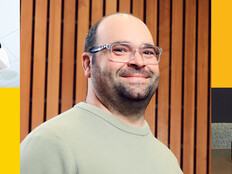Blended Learning Explained in 33 Slides
Blended learning is gaining the attention of colleges around the world as they begin to strategize ways to compete with massive open online courses (MOOCs) and deliver meaningful learning experiences over the web. There is some confusion over the differences between online learning, MOOCs and blended learning. Professor Mike Keppell of Charles Sturt University clarifies blended learning in this presentation:
- Combination of face-to-face teaching and learning with online teaching and learning.
- “It is a design approach whereby both face-to-face and online learning are made better by the presence of each other.”
- “Thoughtful fusion of face-to-face and online experiences.”
- “Combines the properties and possibilities of both to go beyond the capabilities of each separately.”
- “It is a complete rethinking and redesign of the education environment and learning experience.”
While there are clear distinctions in these different types of learning, there also is overlap. While MOOCs seem to be creating a new category of education and don’t depend on a physical meeting location, blended learning environments aim to improve the current model while still relying on a physical meeting place.
As expectations for online delivery continue to rise, colleges are trying to meet demand without abandoning a model that has been extremely successful for both the institutions and the students. Charles Darwin University Vice-Chancellor Professor Barney Glover discussed his school’s strategy for the future in a recent article:
"The challenge is to ensure that students, parents and the community are aware that we offer multi-modal delivery to meet a range of student needs."
He said CDU needed to continue to respond to the same pressures that had caused dramatic and rapid changes to traditional models of delivering higher education.
"New technologies, greater mobility and a deregulated student market are some of the elements underpinning a huge amount of discussion about online learning," he said.
"Massive open online courses (MOOCS) offered freely around the world by some of the biggest universities are an example of how the modes of engagement with higher education are changing.
Read Better blended learning for Central Australian students.
Learn more about Charles Darwin University’s approach to blended learning in the slide show below:
Join us on April 16, 2013 for a webinar focusing on outside-the-box thinking and innovative technologies that drive colleges’ successful distance learning programs. Learn more and register here.








